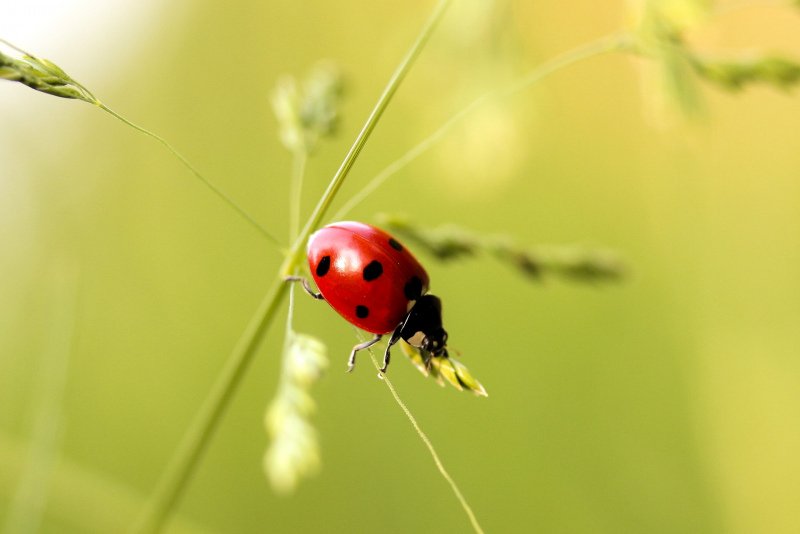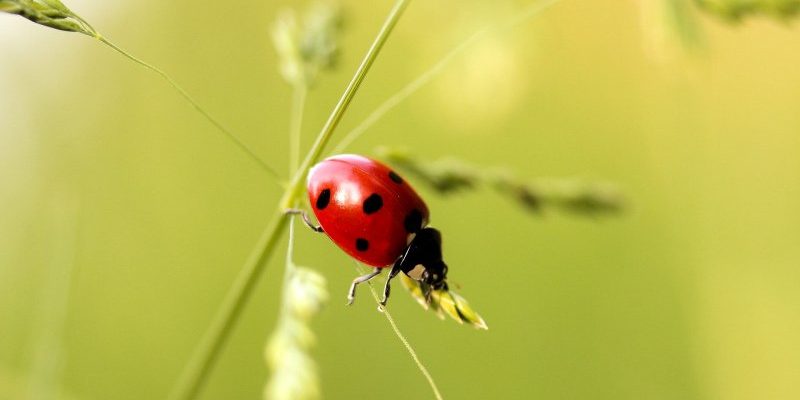
When you think of a ladybug, what comes to mind? For many, it’s that familiar red shell dotted with black spots, a cheerful little insect that seems to bring good luck. Ladybugs, also known as ladybird beetles, belong to the family Coccinellidae, a vast group of insects known for their bright colors and beneficial role in our ecosystems. These tiny creatures are much more than just a pretty face; they are fascinating beings with intriguing behaviors and lifestyles.
Imagine walking through a garden on a sunny day, the air filled with the sweet scent of blooming flowers. Suddenly, a ladybug lands on your hand, its tiny feet tickling your skin. You might wonder, what does this little critter eat? Where does it live? And why do we associate them with good fortune? Buckle up as we dive into the captivating world of ladybugs, uncovering facts and secrets that make these insects truly special.
What Are Ladybugs?
Ladybugs are small beetles that belong to the family Coccinellidae. They are known for their vibrant colors, which can range from bright red to yellow, and their distinctive black spots. Did you know that not all ladybugs are red? Some species are orange or even black! These fascinating insects are found all over the world, making their homes in gardens, forests, and grasslands.
Typically, a ladybug measures between 1 to 10 millimeters in length. Their round, dome-shaped bodies are not just cute to look at; they also play a crucial role in their survival. This unique shape helps them roll into tight balls when threatened, making it harder for predators to catch them. With around 5,000 species globally, ladybugs come in various shapes and colors, each adapted to fit its environment.
As adults, ladybugs can live up to a year or even longer in ideal conditions. However, their life begins as eggs laid on the underside of leaves, usually in groups. Once the eggs hatch, they become larvae, resembling little alligators. This stage is crucial, as they consume a significant number of aphids, which are harmful pests in gardens. So, when you spot a ladybug, you’re not just seeing a cute insect; you’re also witnessing nature’s pest control at work!
Ladybug Habitat
You might be wondering where ladybugs like to hang out. These insects prefer habitats rich in vegetation, where they can find food and shelter. Common places to spot ladybugs include gardens, fields, and even backyards. They thrive in climates that provide warmth and moisture, which is why ladybugs are often seen during the warmer months from spring through summer.
Ladybugs are also known for their migratory behavior. In colder regions, they may migrate in large groups to find warmer spots for the winter. They seek out sheltered areas, such as under tree bark or inside buildings, to ride out the colder months. This behavior showcases their adaptability and resilience to changing environments.
In urban areas, ladybugs can often be found in parks and flower gardens, where they feast on aphids and other pests. By choosing gardens with a variety of plants, you can attract ladybugs and boost your garden’s health. They play an essential role in maintaining the ecosystem, balancing the populations of pests that can harm plants.
Ladybug Diet and Feeding Habits
So, what do ladybugs eat? As you might have guessed, ladybugs are voracious predators of aphids, which are those tiny, sap-sucking insects that can wreak havoc on plants. A single ladybug can consume up to 5,000 aphids throughout its lifetime! This makes them a gardener’s best friend, helping to keep pest populations in check.
In addition to aphids, ladybugs also enjoy munching on other soft-bodied insects like spider mites, mealybugs, and insect eggs. The larvae, in particular, are fierce predators and can eat even more than their adult counterparts. This natural pest control helps reduce the reliance on chemical pesticides in gardens.
Interestingly, when food is scarce, ladybugs can also switch to a diet of nectar and pollen, but they much prefer the taste of live prey. Their feeding habits not only benefit their survival but also the plants they inhabit, making them vital players in maintaining a healthy ecosystem.
Life Cycle of a Ladybug
The life cycle of a ladybug is a fascinating journey that begins with the laying of eggs. Female ladybugs can lay hundreds of eggs, usually on the undersides of leaves, where they are safe from predators. These eggs hatch within a week, giving way to the larval stage, which is when they start to eat aphids and grow rapidly.
As larvae, they go through several molts, shedding their skin up to four times. Once they’ve consumed enough food, they enter the pupal stage, which can last from a few days to a couple of weeks, depending on the species and environmental conditions. Inside this pupal casing, remarkable changes occur as they transform into adults.
Finally, the ladybug emerges, its wings still damp and its colors not fully developed. Within a few hours, the adult ladybug dries off, and its vibrant colors start to show. This whole process from egg to adult takes about four to six weeks, depending on the species and temperature. Watching this transformation is awe-inspiring, showcasing the beauty of nature’s cycle.
Ladybug Behaviors
Ladybugs are not just adorable; they are also fascinating creatures that exhibit a variety of interesting behaviors. One remarkable behavior is their defensive mechanism. When threatened, ladybugs can secrete a yellow fluid from their joints, which has an unpleasant taste for predators. This isn’t just a smart way to deter potential threats; it also helps them survive in the wild.
Another captivating aspect of ladybug behavior is their mating rituals. During the breeding season, male ladybugs will often engage in elaborate courtship displays to attract females. This can involve a series of movements and vibrations that signal their readiness to mate. Once a female accepts a mate, the two stay together for a while before the female lays her eggs.
In addition to mating behaviors, ladybugs also communicate with each other using pheromones. These chemical signals help them find food, locate mates, and even warn each other about potential dangers. Their social interactions create a sense of community, proving that even small creatures have fascinating social dynamics.
Ladybugs and Humans
Ladybugs have held a special place in human culture for centuries. Many people view them as symbols of good luck and prosperity, often believing that if a ladybug lands on you, it brings good fortune. This belief is particularly popular in Europe, where it’s thought that ladybugs can grant wishes if you count their spots.
Beyond their cultural significance, ladybugs are also incredibly beneficial to agriculture. Farmers often welcome these insects into their fields to naturally control pest populations. By reducing the need for chemical pesticides, ladybugs help promote a healthier environment and more sustainable farming practices. This makes them not just lucky, but also essential to food production.
You might also encounter ladybugs in educational settings. Many schools use ladybugs in science projects to teach students about life cycles, ecosystems, and the importance of biodiversity. In this way, ladybugs serve as ambassadors for environmental education, helping to raise awareness about the need to protect our natural world.
Interesting Facts About Ladybugs
| Size: | 1 to 10 millimeters |
| Colors: | Red, orange, yellow, black |
| Diet: | Aphids, mites, and sometimes nectar |
| Lifespan: | Up to 1 year |
| Habitat: | Gardens, forests, grasslands |
| Mating Season: | Spring |
Conservation of Ladybugs
Despite their resilience, ladybugs face several threats that can impact their populations. Habitat loss due to urban development, pesticide use, and climate change are among the primary concerns. As gardens and natural spaces shrink, ladybugs lose the habitats they need for nesting, feeding, and breeding.
Interestingly, some ladybug species are becoming endangered. In the United States, the once-common seven-spotted ladybug has seen a significant decline, primarily due to habitat loss and competition from non-native species. To protect these beautiful insects, it’s crucial to create environments that support their survival.
As individuals, you can help ladybugs thrive by planting diverse gardens filled with native plants. Avoid using pesticides and chemicals that can harm beneficial insects. Even smaller actions, such as creating shelter with logs or stones, can provide ladybugs with safe spaces to live and breed. Every little bit helps in conserving these charming creatures for future generations.
FAQ
Why do ladybugs have spots?
The spots on ladybugs serve multiple purposes. Primarily, they act as a form of warning to potential predators. The bright colors and striking patterns signal that they might be toxic or unpalatable. Additionally, these spots can help in species identification, as different ladybug species have unique spot patterns.
Are ladybugs harmful to plants?
No, ladybugs are not harmful to plants. In fact, they are considered beneficial insects because they primarily feed on pests like aphids that can damage gardens and crops. By controlling these pest populations, ladybugs help promote plant health and growth.
How can I attract ladybugs to my garden?
To attract ladybugs, consider planting a variety of flowering plants that produce nectar and pollen. Avoid using pesticides, as these can deter ladybugs. Additionally, you can create shelter by incorporating natural elements like logs or stones into your garden. Providing a suitable habitat will encourage ladybugs to visit and help control pests.
What is the difference between a ladybug and a ladybird?
The terms “ladybug” and “ladybird” refer to the same insect, but the terminology varies by region. In the United States, “ladybug” is commonly used, while “ladybird” is the preferred term in the UK and other countries. Regardless of the name, these charming beetles belong to the same family and share similar characteristics.
Can ladybugs be pets?
While ladybugs can be kept as pets for educational purposes, they are not suitable long-term pets like cats or dogs. Ladybugs have specific dietary needs and require a proper habitat to thrive. However, you can create a small enclosure to observe them and learn about their behaviors before releasing them back into the wild.
What does it mean if a ladybug lands on you?
In many cultures, if a ladybug lands on you, it is considered a sign of good luck. Some believe it can bring prosperity or the fulfillment of a wish. This delightful superstition adds to the charm of ladybugs, making them one of nature’s lucky charms.
Do ladybugs hibernate?
Yes, ladybugs do hibernate, especially in colder climates where temperatures drop significantly. They often gather in large groups and seek shelter in tree bark or under leaves to escape the cold. Hibernation helps them conserve energy until warmer weather returns, allowing them to emerge and continue their life cycle.
How long do ladybugs live?
The lifespan of a ladybug can vary depending on species and environmental conditions. On average, ladybugs live up to a year. However, some species can survive longer under ideal conditions. Factors such as food availability, climate, and habitat can influence their longevity.
Can ladybugs fly?
Yes, ladybugs are capable fliers. Their wings are hidden beneath their hard outer shells, which they can open to take flight. Ladybugs can cover significant distances in search of food or suitable habitats. Watching them soar through the air is a delightful sight!
What happens if a ladybug bites you?
Ladybugs are generally harmless to humans. However, they can bite if they feel threatened, and their bites may cause a mild irritation akin to a pinprick. The bite is not venomous and poses no real danger. If you ever get bitten, simply wash the area with soap and water.

